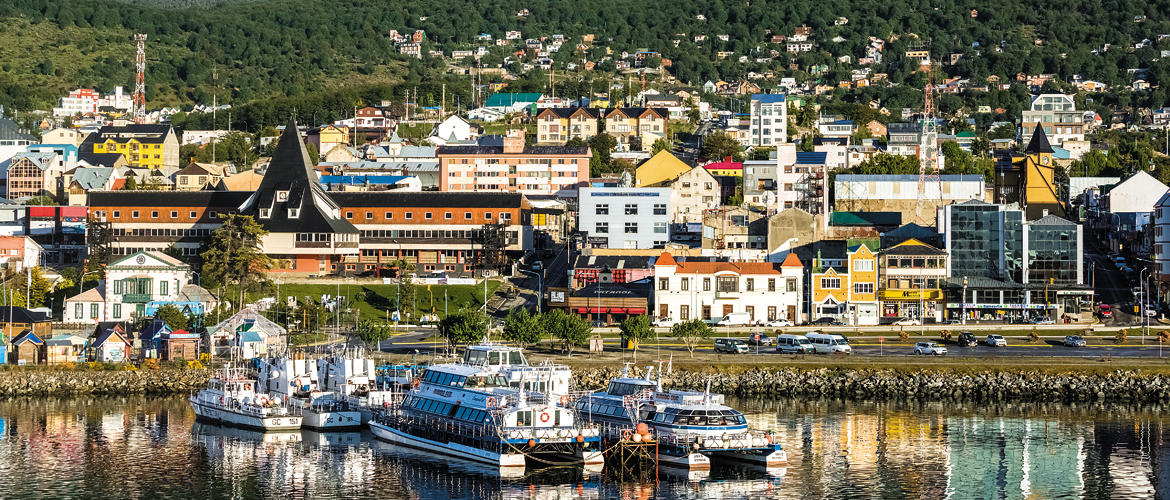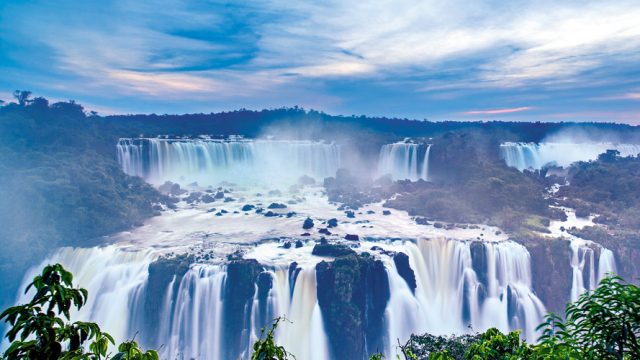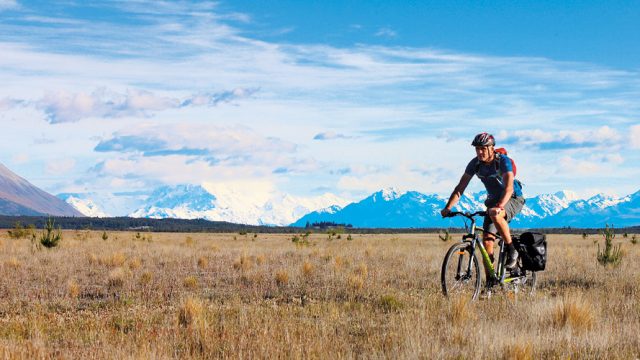It has taken me many months to be able to write about Argentina after an unprecedented and

Then the dreams began. Slow-motion reveries of those unforgettable pampas and infinite ice fields, laid out before distant dun horizons, with eagles wheeling miles above. Something very much like this also happened to Darwin long after he returned home. Writing at the very end of his life about what he found most unforgettable, he noted, “I find the plains of Patagonia frequently pass before my eyes… they are characterised only by negative possessions; without habitations, without water, without trees, without mountains, they support merely a few dwarf plants. Why then… have these arid wastes taken such firm possession of the memory?”
That nebulous formlessness is part of the national ethos. If its neighbouring giant Brazil is “the country of the future, and always will be”, Argentina arrives, again and again, and then generally collapses, only to rise anew. Amply blessed with every natural resource and millions of hectares of arable land, the country is home to just 44 million citizens (only slightly more than Odisha). Almost all Argentines trace their roots back to 19th- and early 20th century Europe, when millions of eager migrants crossed the ocean to participate in the country’s booming ‘Belle Epoque’. Before World War I, GDP grew by at least 6 per cent annually for nearly 50 years, the greatest bull run in recorded history. Back then, Argentina was amongst the 10 richest countries in the world, much better off than France or Germany. Even more than the USA, it was justifiably known as the ‘land of opportunity’.
A full century of rollercoaster history after that heyday, Argentina is steadily inching into the global spotlight again. It has been just 35 years since democracy was restored following a series of military coups, and there is a new generation of adults charged with aspirations, who have brought palpable vigour and sustained growth in the national economy. There have been positive side-effects for culture and society. Other Latin Americans once commonly derided Argentines as ‘Italians who speak Spanish, but think they’re British’, but these old slurs are giving way to widespread admiration for a highly developed country with a well-educated, self-confident populace—think Messi or the Pope—that is flourishing in the 21st century global arena.

This irresistible liveliness sparks from the moment of touchdown in Buenos Aires, as sardine-packed Argentinos burst into sustained applause, whoops and celebration. We have been travelling excruciatingly cramped for 15 hours non-stop from Paris, but now everyone is wide awake with excitement. Even while disembarking at the Ministro Pistarini International Airport, it is striking how different the atmosphere is from other South American countries. There is considerable truth to Marlene Dietrich’s famous quip, “In Brazil they throw flowers at you. In Argentina, they throw themselves.” From the moment of arrival, until the final goodbye at the airport departure lounge, there is only the fullest bore warmth and a remarkably intimate hospitality, where it feels like nothing is being held back.

This characteristically Argentine penchant to go for the maximum is evident everywhere in their beloved capital city. Even by South American standards, the three million population of Buenos Aires isn’t particularly significant. Nonetheless, Porteños (as local inhabitants are called, in acknowledgement of the central historical role of the city wharves) inhabit an urban environment bursting with superlatives, where the highest density of bookstores in the world is balanced by the largest number of football stadia per capita. It is the most visited city in the continent, a spectacularly diverse melting pot for migrants from around the world, and an education magnet that draws in students from across the Spanish-speaking world. Far grander than Madrid, with much more swagger than Paris, this city should have long outgrown its longstanding (and annoyingly lingering) obsession with comparing itself to far distant points on the map.
For literature-minded pilgrims like myself, Buenos Aires is something like the centre of the world. This is because of the towering genius Jorge Luis Borges (undoubtedly the most deserving Nobel Prize for Literature candidate who never won), for whom the city was both palimpsest and inexhaustible creative wellspring. It is hard to think of a comparable example anywhere else in the world, where a great writer and his home city are so inextricably interlinked. Walking through the stately canyons of grand siècle architecture in the old neighbourhoods this masterful magic realist wrote about so often, it was impossible to keep his words out of my head, “Hard to believe Buenos Aires had any beginning, I feel it to be eternal as air and water.”


Most of his iconic works were written in the first half of the 20th century, but even now it doesn’t take much effort to become immersed deep in the emotional landscape of Borges’s writings. Perhaps the easiest route is to venture into the Cemetariode la Recoleta (Recoleta Cemetery) just after sunrise, where you will find yourself shivering only partly from the pre-dawn chill. “I thought about these things in the Recoleta/in the place of my ashes,” wrote the poet, “only life exists/Its forms are space and time/they are magical instruments of the soul/and when it is extinguished/space, time, and death will be extinguished with it/as the mirrors’ images wither/when evening covers them over/and the light dims.” This stunning museum of mausoleums is the nerve centre of Argentine identity, with one highlight being the tomb of Eva Perón.
Everyone has heard of Evita—actually María Eva Duarte de Perón—especially after the hit Andrew Lloyd Webber musical that was made into a movie in which Madonna portrayed the wildly beloved Spiritual Leader of the Nation (a title she was awarded by the National Congress) and wife of the leftist general and populist president Juan Perón. But you have to visit her gravesite in Recoleta after work hours in the evening to realise the extent of her contemporary cult, as crowds of Argentines press towards it like they’re approaching a deity, leave petitionary notes all around, and light innumerable candles to defy the fast-falling dusk. I was riveted on my first visit, watching a war veteran, who tossed aside his crutches to kneel before the tomb. Just then, two visibly moved old ladies burst into sobs, consoling each other in wordless embrace.
This is another unusual trait of the Argentines: the conspicuous lack of the gene for irony. There is nothing rote or cynical about their flag-waving. These people love their country incandescently, which includes holding formidable grudges about perceived slights. In this regard, nothing rankles their undiluted patriotism more than the affront of ongoing British rule over the Malvinas Islands (a.k.a. the Falklands) and the unforgivable treachery of the Chileans who gave tacit and material support to the Europeans in the brief, humiliating Guerra del Atlántico Sur (Falklands War) that ended in abject surrender in 1982. Every populated corner of this country has a memorial to ‘the martyrs’ of that conflict (where 649 Argentine military personnel were killed), and the most permanent smiles on the friendliest of faces will disappear instantaneously at its memory.
Even I, visiting from India so many years after the conflict, felt the edge of this seething national sentiment when I went out to watch the finals of the Copa América football tournament where Argentina faced its most hated rival, the same Chileans who had beaten them the year before in an identical matchup. I was wearing a fleece bearing the minuscule insignia of the British Antarctic Survey. We queued up for a long time to enter the local sports bar, but then the bouncer spotted the (almost invisibly tiny) Union Jack on my shoulder and shook his head. No entry! It was only after I packed the offending item away in my bag that his light turned green.

Dealing with the cold in my shirtsleeves was worth it because there is no better way to get to know a country than from the sidelines of its favourite sporting events. Football players are famously said to reveal the national character on the pitch, but the same is true of the way their passionate followers behave. The room that night in Buenos Aires literally shook to the rafters. But as the game neared its end without a goal scored, fatalism set in. The match wasn’t yet lost, yet the crowd radiated defeat. By the time Chile finally won, via penalty kicks, they had already begun to cheer up again. And now these young Argentines set about another national pastime as they hotly pursued each other to pair off and head home together.

But even if coming in second to their abhorred neighbours seems almost accepted, no one forgets or forgives anything. Soon after arriving at the airport at Ushuaia, a long flight south from the national capital, we were treated to an exhilarating helicopter ride high above the Beagle Channel (so named because Darwin’s famous ship visited here in the 1820s) that forms part of the border between Chile and Argentina. The pilot kept circling to show us “the good side”, while contemptuous about “that area which has nothing interesting”. Meanwhile our eyes were popping out of our heads at the jagged mountains, magnificent grey-blue waters studded with ice floes, and on one side, this improbable city at the very end of the known road.
Ushuaia is bitingly cold proof that Indians have not, in fact, penetrated to settle at the ends of the world. Of this remote but bustling city’s 60,000 residents, not a single one is from our part of the world, as I found after searching for three days. I discovered a Taiwanese adventure sports enthusiast and several separate families with roots in the Levant (the former Argentine president Carlos Menem’s parents were from Syria). But even in this hub of nascent technology and industrial enterprises, no dice for Indians. This is rather surprising, and also an excellent opportunity. For anyone who can deal with 17 hours of daylight in summer and just seven in winter, the trade-off is mightily worth it, because this is the most beautiful and pristine environment imaginable, with air so clean it is like you are breathing for the first time.
Bruce Chatwin’s In Patagonia is one of the most celebrated travel books of all time, full of lyrical description and penetrating insight. But Chatwin did not like Ushuaia, which he reports leaving “like an unwanted tomb”. The town has a bleak history, he recounts, which “began with a prefabricated mission house put up in 1869 by the Rev. W.H. Stirling alongside the shacks of the Yaghan Indians. For 16 years, Anglicanism, vegetable gardens, and the Indians flourished. Then the Argentine Navy came and the Indians died of measles and pneumonia. The settlement graduated from navy base to convict station.” Now this “masterpiece of cut stone and concrete more secure than the jails of Siberia” is an unusual museum, complete with an art gallery. But the single wing that has been left as a cellblock is what sears the imagination with a bitter chill.
With a pipeline of subsidies and incentives pumped in by the state, Ushuaia is far removed from its prison past. But there is still a decidedly melancholic hum to the city that lingers in your ears even as you get on the flight to Calafate, almost 1,000 kilometres north but still within Patagonia. This distinctly cheerful little city bunches down to the southern bank of Lago Argentina, a massive freshwater lake that sprawls across nearly 1,500 square kilometres. A pleasant place with a laid-back hippie vibe, its main street is lined with restaurants, ice cream shops and tiny stores selling homemade souvenirs to cater to large numbers of tourists who wheel in and out of town, using it as the entry point to the Los Glaciares National Park, the UNESCO World Heritage Site that is also the largest national park in Argentina.

Los Glaciares comprises over 7,000 square kilometres of the Andes ice cap and the Southern Patagonian Ice Field, the biggest outside Antarctica and Greenland, which includes 48 glaciers. Just 78 kilometres from Calafate is Perito Moreno Glacier, a formation that spreads over 250 square kilometres before meeting Lago Argentina, where travellers can approach it via boats. As you speed along the water to the glacier, an impeccably thin line of blue steadily reveals itself as a massive shelf of ice several storeys high. Up close, you are inevitably driven to silence as you watch giant slivers and slices of ice calve off and smash into the water below.
The other great natural wonder of Argentina is the Iguazú Falls, the largest waterfall system in the world, located far away from Patagonia in the corner of the country that meets both, Paraguay and Brazil. Here, the Iguazú River tumbles far down the Paraná Plateau, creating a breathtaking array of over 150 cataracts, including the stunning U-shaped Devil’s Throat which sends out a plume of spray that can be seen for miles around. Walking all the way down to the waterline to take a boat under the falls is another bucket list item, with the expert crew lingering until everyone is both drenched and exhilarated, before speeding upriver in the heat of the sun to dry you off again.
From Ushuaia to Iguazú is 4,359 kilometres (by contrast, Kanyakumari to Kashmir is just 2,856 km), and the difference between Patagonia and Misiones is comparable to that between Norway and Haiti. But Argentina makes it work, which is but one function of all that oversized patriotism. There are always tell-tale signs for a country on the rise and about to experience its moment in the global spotlight. This is demonstrably the case with Buenos Aires, but also penetrates right to the remote reaches of Patagonia. Everyone talks about this being the Asian century, but keep an eye out for Argentina too.
Buenos Aires
International
South America





